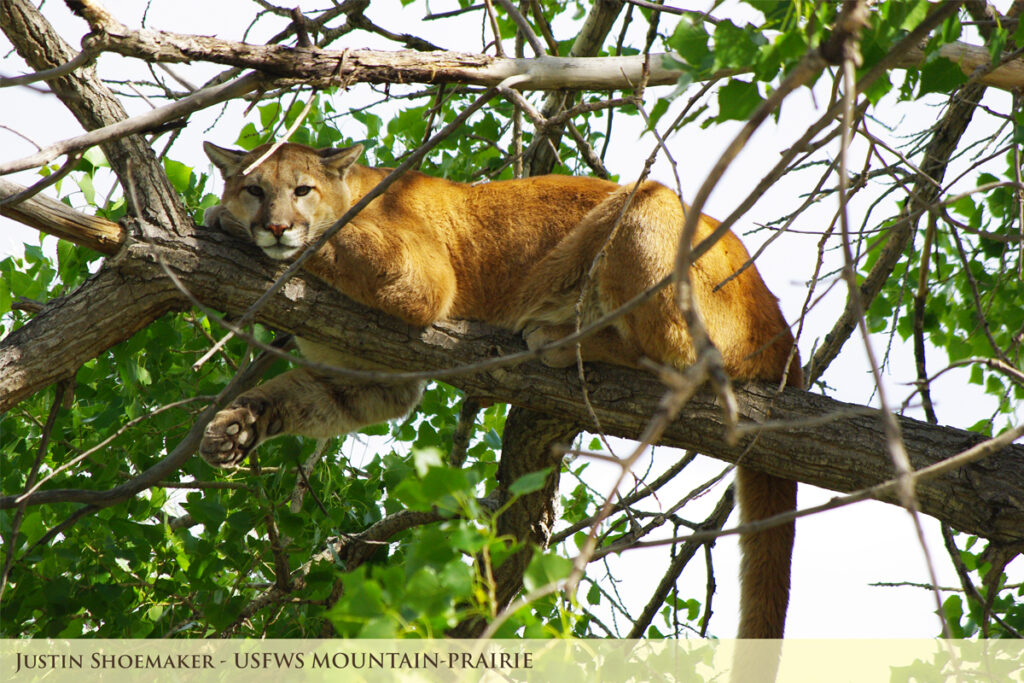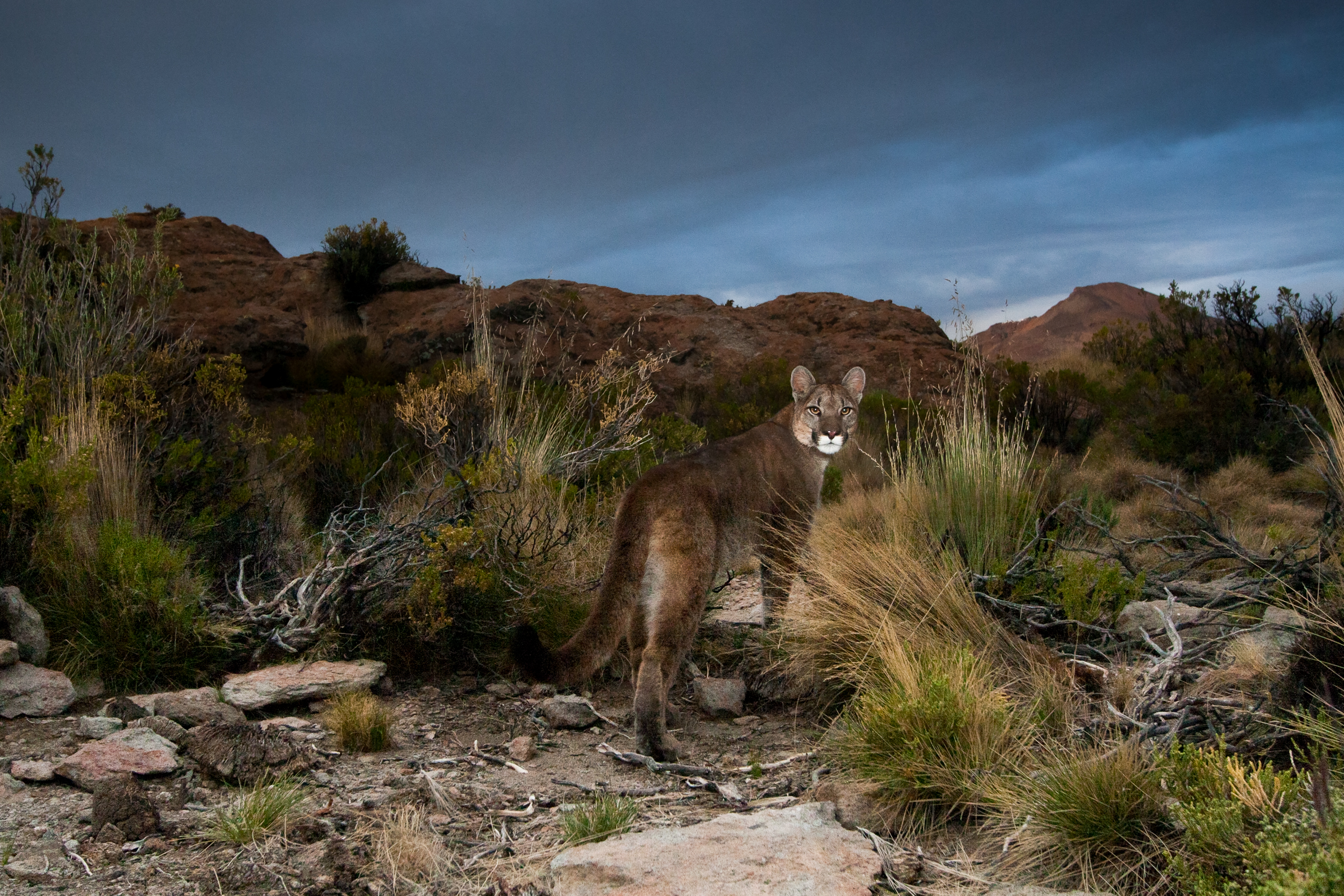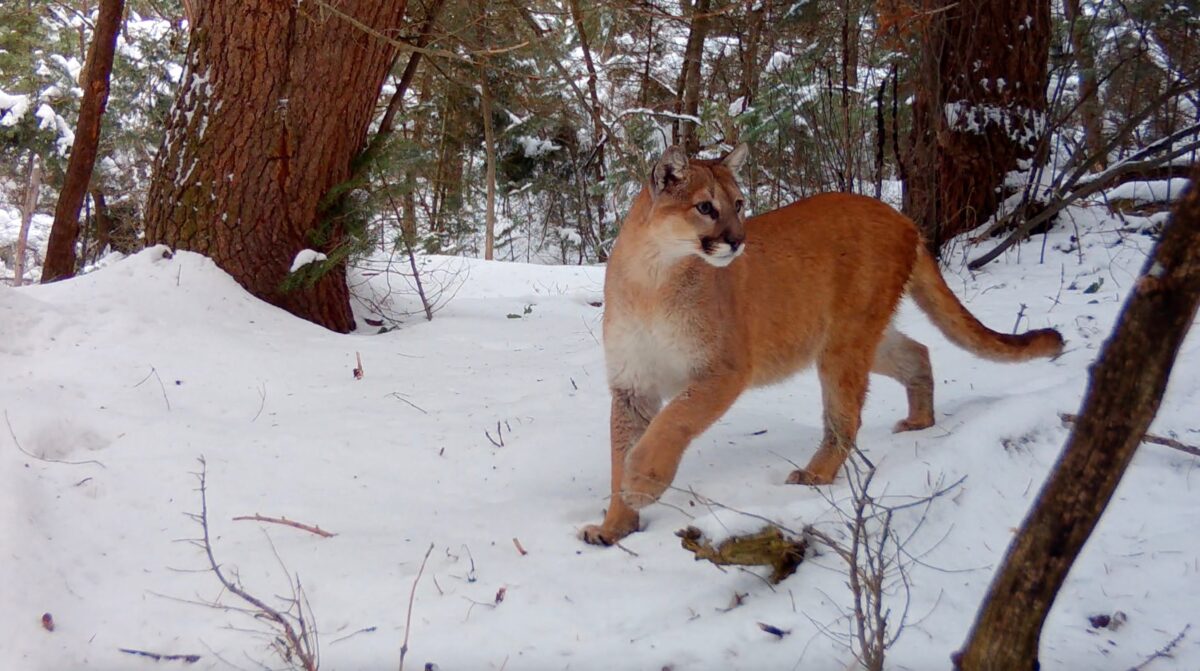By Byron Weckworth, Chief Conservation & Advocacy Officer, Mountain Lion Foundation
THE PUMA’S QUIET PRESENCE
If you are one of the lucky ones traversing through the West’s wild places during those crepuscular hours of the day, maybe you’ve felt it, the quiet awareness that you are not alone? A ripple in the brush. A trail of pawprints edged in frost. Mountain lions rarely show themselves, but their presence is everywhere, with impacts felt across every part of the ecosystems they inhabit. Mountain lions are architects of balance, shapers of movement, and the consummate providers of life to others. They move quietly through landscapes influencing them in ways far more powerful, and beneficial, than their elusive nature suggests. And they remind us that we too are part of nature’s intricate balance.
THE ECOLOGICAL BROKER
Science describes mountain lions, or pumas, or one of any dozens of names, as “ecological brokers”, species whose behavior and ecology knits together entire ecosystems. By hunting deer and elk, pumas regulate the density and distribution of large herbivores across the landscape, which helps forests and grasslands regenerate. But their influence goes beyond numbers. In a sweeping review of the science to date on the cats’ biotic relationships, LaBarge et al. (2022) describe how pumas connect the living world. Their influence begins with the most fundamental interaction in ecology: predation. LaBarge and colleagues summarize the puma’s role in creating the well known ecological concept of a “landscape of fear.” Ungulates adjust their behavior to the perceived risk of predation by pumas, altering how they move, rest, and forage. When lions are present, deer typically avoid areas with dense cover, steep slopes, or limited sightlines. This shift reduces browsing pressure on vulnerable vegetation, particularly in riparian zones where recovery of willow and aspen can cascade into improved water retention, increased songbird diversity, and habitat creation for beavers.
THE CASCADE OF LIFE
Next comes a second wave of ecological influence, one that scientists have yet to fully quantify. After a successful hunt, a puma’s work continues. Each carcass becomes a gathering place for life. A single deer can support more than a dozen vertebrate scavenger species, alongside countless invertebrates and microbes (LaBarge et al. 2022). These scavengers redistribute nutrients beyond where the lion feeds, accelerating nutrient cycling and enriching soils. This “punctuated nutrient subsidy” provides pulses of energy that ripple across food webs, sustaining life in winter months when resources are scarce. It is not hyperbole to suggest that pumas engineer ecological fertility, one carcass, one forest clearing, one cycle of renewal at a time.
WHEN ECOLOGY MEETS HUMAN SAFETY
Their impact reaches beyond the wilderness. In a provocative study investigating the social benefits of rewilding, Gilbert et al. (2017) paired predictive modeling with real-world evidence to evaluate how puma recolonization could improve human safety. First, they modeled the effects of mountain lions returning to the eastern United States, where white-tailed deer densities and deer-vehicle collisions are high. The results were striking, by reducing deer abundance and altering deer behavior; pumas were projected to prevent tens of thousands of collisions, thousands of injuries, and as much as $2.13 billion in avoided costs over 30 years. To ground this prediction, the authors also examined existing puma-deer dynamics in South Dakota, where recolonizing lions already provide measurable reductions in collision-related damages each year. The lesson is the same in both cases, the ecological forces that help heal forests can also make our communities safer. Predation reduces ungulate density and changes where and when deer move, but the benefits accrue to people through safer roads, fewer injuries, and lower economic costs.
THE TRUE MEANING OF COEXISTENCE
This is the seldom-acknowledged truth of coexistence. Puma are not merely occupants of remote terrain. They are quiet partners in keeping ecosystem services stabile. Protecting lions protects the ecological processes that maintain healthy forests and watersheds, and the very web of life that sustains us all.
A PATH FORWARD: PROTECTING THE ARCHITECTS OF BALANCE
To secure these benefits, we must move beyond admiration to deliberate policy and action. That means countering indiscriminate killing that destabilizes populations by embracing science-based management that maintains natural age structures and social stability. It means preserving habitat connectivity through wildlife crossings, open space protections, and thoughtful regional planning so that puma can move, disperse, and maintain genetic diversity. It requires that we invest in coexistence strategies, from non-lethal protection to community education, strategies that reduce conflicts without sacrificing ecological function. Most of all, it means recognizing pumas not as expendable, but as partners in sustaining the landscapes we all depend on.
Further Reading:
LaBarge LR, Elbroch LM, Wilmers CC (2022) Pumas (Puma concolor) as ecological brokers: A review of their biotic relationships. Mammal Review, 52, 1-19.
Gilbert SL, Sivy KJ, Pozzanghera CB, et al. (2017) Socioeconomic benefits of large carnivore recolonization through reduced wildlife-vehicle collisions. Conservation Letters, 10, 431-439.
Elbroch LM, O’Malley C, Peziol M, Quigley HB (2017) Vertebrate diversity benefiting from carrion provided by pumas and other subordinate, apex felids. Biological Conservation, 215, 123-131.
Barry JM, Elbroch LM, Aiello-Lammens ME, et al. (2019) Pumas as ecosystem engineers: ungulate carcasses support beetle assemblages in the Greater Yellowstone Ecosystem. Oecologia, 189, 577-586.
Ripple WJ, Estes JA, Beschta RL, et al. (2014) Status and ecological effects of the world’s largest carnivores. Science, 343, 1241484.




 Facebook
Facebook Twitter
Twitter Send Email
Send Email

